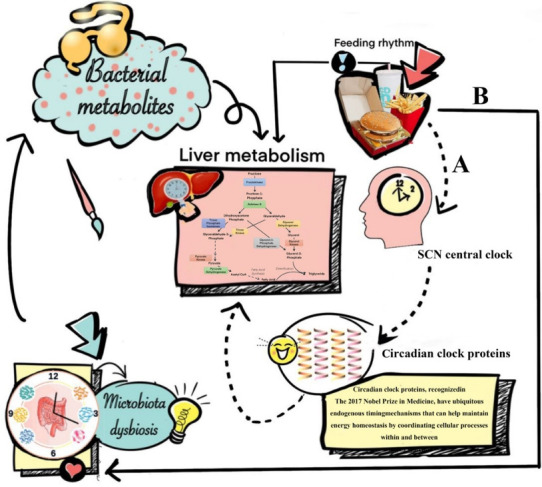Fig. 1.

Feeding rhythms and non-obese non-alcoholic fatty liver disease (NAFLD). Feeding rhythms can reset peripheral tissue clocks and subsequently leads to non-obese NAFLD without influencing the supra-chiasmatic nuclei (SCN) central clock rhythms. (A with dotted line) Directly cause non-obese NAFLD, possibly via resetting the liver clock; resetting liver clock can not only change the systemic metabolism like glucose, lipid, cholesterol and bile acid metabolism, but also lead to autophagy, endoplasmic reticulum stress and increased oxidative stress in hepatocytes. All these factors have been confirmed to be associated with the occurrence of non-obese NAFLD. (B with solid line) Indirectly cause non-obese NAFLD, possibly via changing the gut microbiome; gut microbiome may be another key factor involved in the development of non-obese NAFLD. When the gut microbiome changes (dysbiosis), secondary metabolites are produced, e.g., short-chain fatty acids and bile acids, which may contribute to development of non-obese NAFLD.
